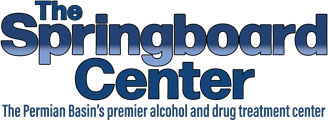Death arrives in microscopic doses now. Invisible. Odorless. Unstoppable.
The new wave of designer drugs hitting our streets rewrites the rules of addiction and survival. A single grain can overwhelm your nervous system while amateur chemists tweak molecules in hidden labs, creating compounds so potent that first responders find victims with needles still in their arms.
These aren’t your parents’ street drugs. They’re pharmaceutical wolves in sheep’s clothing, engineered to slip past legal definitions while binding to receptors in your brain with terrifying precision. Emergency physicians can only watch helplessly as traditional overdose protocols fail against these synthetic invaders.
Related: Early Warning Signs of Relapse to Look Out For
What Are Designer Drugs?

Designer drugs represent a complex and continuously morphing threat to public health, with legal high dangers lurking in every molecular modification.
These synthetic chemical compounds are carefully engineered to mimic — and often amplify — the effects of traditional illegal drugs while simultaneously dancing around existing legal restrictions. Unlike naturally occurring substances, these laboratory-created molecules are crafted with one primary goal: to produce intense psychological and physiological experiences while remaining technically “legal” through constant molecular manipulation.
Chemists and underground manufacturers continuously modify these substances, creating a moving target for law enforcement and medical professionals. Each tweak to the molecular structure can potentially create an entirely new substance that isn’t yet classified as illegal, making regulation exponentially more challenging.
For instance, some designer drugs have been found to involve niche chemical alterations that can make them significantly more psychoactive than the substances they replicate.
Common Types of Synthetic Drugs
This synthetic drugs list reveals the alarming diversity of these dangerous substances. Many of these drugs can be easily accessed through online platforms, making them particularly appealing to vulnerable populations. Additionally, the rapid evolution of these substances often outpaces public awareness, leaving users unaware of the risks associated with their use.
Bath Salts Effects
Bath salts are one of the most notorious categories of designer drugs.
Despite their innocuous-sounding name, these synthetic stimulants have nothing to do with actual bathing products. Composed of complex synthetic cathinones, these substances can trigger extreme psychological reactions that far surpass the effects of traditional stimulants.
Bath salts effects include intense and unpredictable psychological states characterized by:
- Extreme paranoia
- Hallucinations
- Violent behavioral change
These intense effects can lead to severe consequences, including self-harm or harm to others.
The chemical composition varies widely, meaning that no two experiences are remotely similar. One dose could lead to mild stimulation, while another might induce a complete psychotic break.
Synthetic Cannabinoids
Synthetic cannabinoids, often marketed under street names like “Spice” or “K2”, bear little resemblance to natural marijuana. These laboratory-created compounds interact with brain receptors far more aggressively than THC, potentially causing severe neurological damage.
Some users report symptoms similar to those of psychoactive reactions seen in hallucinogenic drug use, leading to misdiagnosis and inappropriate treatments.
Unlike natural cannabis, synthetic cannabinoids lack consistent chemical structures. This inconsistency means users have no reliable way to predict potency or potential side effects. Neurological impacts can include seizures, extreme anxiety, psychosis, and long-term cognitive impairment.
Research Chemicals
Research chemicals are one of the most experimental and dangerous segments of designer drugs.
Originally developed for scientific exploration, these substances have been co-opted by underground markets seeking novel psychological experiences. Products marketed as research chemicals can have dangerously potent effects that have not been documented or studied, putting users at high risk.
These new psychoactive substances are typically untested for human consumption, posing extreme risks that extend far beyond typical drug-related dangers.
Related: Is Gabapentin an Opiate? Knowing Your Medication
Hidden Dangers of Designer Drugs

Unpredictable Chemical Compositions
The constantly shifting molecular structures of designer drugs create unprecedented medical challenges, especially because the production of designer drugs often occurs in underground laboratories with minimal safety protocols.
Traditional toxicology screens struggle to identify these substances, and medical professionals often find themselves treating symptoms without understanding the underlying chemical cause. In some cases, extensive testing is needed just to identify the substances involved, leading to delays in administering effective treatment.
Lethal Contaminants
The production of these synthetic substances occurs in unregulated environments, introducing potentially fatal contaminants. Designer drug overdose risks are dramatically increased by dangerous adulterants that can include industrial chemicals, heavy metals, and unexpected psychoactive compounds that dramatically increase health risks. These contaminants can lead to acute health issues that compound the already dangerous effects of the drug itself.
Extreme Potency Variations
The potency in designer drugs fluctuates wildly. A single batch might contain concentrations ranging from mild to lethal, making overdose a constant, unpredictable threat. Users have no reliable method to determine safe consumption levels.
This variability can lead to a false sense of security among users, who may mistakenly believe they can handle higher doses without serious consequences.
Unknown Long-Term Effects
Perhaps most terrifying is the complete absence of comprehensive medical research. Medical professionals are increasingly challenged by the complexity of designer drugs and their unpredictable effects. These substances represent a massive, uncontrolled human experiment with potentially devastating neurological and physiological consequences.
Long-term users may experience cumulative side effects that have yet to be fully defined, leading to chronic health issues that could persist long after use stops.
Related: Addiction vs Dependence: Why These Terms Aren’t Interchangeable
Signs of Designer Drug Use
Physical Symptoms and Changes
Club drug symptoms often involve distinct physical changes that can occur rapidly and unpredictably. Observable physical warning signs include sudden weight changes, unusual pupil dilation, unexplained skin irritations, and dramatic shifts in personal hygiene.
These changes can serve as important indicators for family and friends who may suspect substance use.
Behavioral Red Flags
Sudden, erratic behavioral changes are the typical indicators that anyone should watch out for. Mood swings, inexplicable aggression, and significant personality shifts might signal synthetic drug use.
In some cases, individuals may exhibit increased secrecy or paranoia, which can further alienate them from their support systems.
Social Withdrawal Patterns
Addiction frequently manifests through social isolation. Individuals may progressively disconnect from friends, family, and previously enjoyed activities.
This withdrawal can be particularly pronounced as users seek to hide their substance use from loved ones, resulting in deeper feelings of isolation.
Changes in Sleep Habits
Disrupted sleep patterns — whether excessive sleeping or complete insomnia — often accompany designer drug use. Persistent sleep disturbances can further exacerbate mental health issues, creating a vicious cycle of worsening health. These changes may also indicate underlying neurological impacts.
Possession of Suspicious Packages
Families should remain vigilant about unusual packaging, unmarked containers, and unexplained mail or delivery arrivals. The presence of such items may indicate the presence of designer drugs in the home, posing risks to everyone in the household.
Need Support? Reach Out to The Springboard Center
Recovery is possible. The Springboard Center in Midland, Texas offers compassionate support for individuals struggling with addiction. Our evidence-based approach focuses on healing the entire person — mind, body, and spirit.
Our nationally recognized programs on medical detoxification, residential treatment, and intensive outpatient services are designed to support your unique journey toward wellness. With patient improvement rates 70% higher than the national average, we’re committed to helping you reclaim your life.
You are not alone. Reach out today, and take the first step toward healing.




